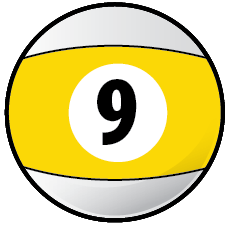In a nutshell. The '11th' as a colortone, a perfect fourth moved up one octave, is a way to float between the major / minor tonalities without really committing to either one. Thus songs based on a '11th' chord, as say a 'C' min11, have a continuous feeling of suspension while moving through time, without cadentialing towards any particular tonic note. While we'll find a couple of ways to use this lofty character, perhaps its most common position is created by raising the major or minor 10th of a chord to the perfect 11th, creating a '4-3' suspension in the sound of this unique and super important one of a kind chord. That the Eleven chord alone also becomes a basis for full compositional responsibilities, with its floating sense of suspension between the major and minor tonal environments, and often modal leaning too, we want to know about it. |
So why a perfect 11th? Simply in that this is the same pitch above our root as the perfect fourth, just now moved up an octave ( 4 + 7 = 11 ). So again we bump into the idea here that with the colortones, the music theory of the natural diatonic 11th is usually more about making chords than creating melodies. |
So in theory, having an 11th usually implies that we also have some sort of 9th in our chord. And having a 9th implies we've a 7th in the chord as well. 'The finger bone's connected to the hand bone, the hand bone's connected to the wrist bone.' One usually with another, all in a perfectly closed loop. Please examine numbers and pitch letter names for the 11th / Eleven, measured from the root pitch 'C.' Example 1. |
|
Cool ? Getting this chart 'roted up ?' |
Theory names: perfect 11th. So why is this interval labeled perfect? Simply in that in the olden days, the best sounded intervals were called 'perfect.' Thus, the perfect fourth, here now also as the 11th, was among the most consonant intervals of the day. Along with its inverse the perfect 5th, and of course the ever pure and perfect octave, we've our three, perfect pitch core. |
Upon this basis of aural purity / perfection is built the silent architecture which creates all of our music. So they sound 'perfect' as compared to other intervals? Yep, that's the whole of the idea. Example 1b. |
 |
Which is the tonic / root pitch? Are you hearing the Five / One motion from C to F in the last idea. This pitch motion of the perfect fourth, especially when these pitches are the root pitches of our chords, is the most common in all of our American and Western musics. We cycle chords by perfect fourth to create the sequences or chord progressions to support our melodies and build up a song. Generally, know that there are set cycles of chords for each of our styles. |
Aural perfection. This idea of aural perfection is based on when pitches are sounded together, how many 'beats' can we hear in their combined sound. These beats are simply oscillations of sound waves created when pitches are sounded together. The purer or more perfect the combination of pitches, the fewer beats we hear in their combined sound. The octave interval is perfect, no beats. So perfect octave, fourth and fifth, in comparison to our other interval combinations, i.e., the major and minor seconds, thirds, sixths and seventh's etc. |
So where is this colortone in the music? The natural 11 is most often found in our core musical styles down the octave as part of a 4 / 3 suspension, whereby the third of the chord is suspended up a half step to Four. Thus the idea of 4 down to 3 (4 / 3). We hear this in both melody and chords, in most of the American styles. |
Eleven in the melody. Probably most common is the 'sus 4' chords, where we move Four up an octave to Eleven and name the chord -11. So if your instrument won't play chords, then you get to 'float' atop it all riding on Eleven. Resolution to the 3rd either major or minor is most common initially. Thinking D -11 with the 11th / G in the lead. Example 2. |
 |
Natural 11 / the clash of the tones. With the half step proximity of Eleven to major Ten, or Four to major Three, this half step between these pitches is usually avoided within the same chord. There's just not a common V 7 / 11chord which would combine a major 3rd and the natural 11. With the minor third, all is cool as the interval between the two widens to a whole step. Compare the sounds thinking 'A' minor. Example 2a. |
 |
This sort of dissonance has a place in our musics but is limited. Actually sounds kind of cool in this passing chord role. And does set of the silky cool cosmic float of the minor 11 chord. Piano can easily place these pitch combinations right together. Do explore. |
Minor 11th chords. As guitarists, our minor eleven chords are mostly just the pitches of a minor 7 chord with the added 11th. Of course these chords are based on a minor triad, while the 5th or 9th can be present or not, as the chord shape allows. Please examine the pitches and sound of the natural 11 color on top of an A minor chord. Example 2aa. |
scale degrees |
1 |
2 |
3 |
4 |
5 |
6 |
7 |
8 |
|
A minor pitches |
A |
B |
C |
D |
E |
F |
G |
A |
|
arpeggio degrees |
1 |
3 |
5 |
7 |
9 |
11 |
13 |
15 |
|
A minor arpeggio |
A |
C |
E |
G |
B |
D |
. |
. |
 |
This is a butter voicing. Fully movable up and down the neck, try moving it 'in soto' up a string. |
|
A parent scale for minor 11th chords. This last voicing is a rather common Two chord in the bossa and Latin styles. As Two, we can locate it's parent scale as the diatonic major scale numerically. Simply; what diatonic major scale has the 'A' as it's second scale degree? |
Hmm ... G major? Perfect. So in looking for a group of pitches to improvise melodic ideas over this A -11 chord, the pitches of its parent scale G major, are a solid group to start with. Example 2b. |
 |
As easy as that? Yes it can be. Our diatonic pitches feed the bulldog regularly. Nothing fancy really, just lyrical ideas. This last line has a couple of key features. It opens with a interval sequence followed by an ascending scale lick and closes with a new motive sequence. |
A pattern in fourths. So since Eleven and Four are basically the same pitches, we can feature this interval in our lines and create something a bit more 'outside' over the minor 11 chord, while retaining our diatonic core. In this next idea we simply permutate the 'G' major scale pitches in diatonic fourths. Example 2c. |
 |
How cool is that huh ? While tricky, diatonic patterns in fourths create a whole 'nother universe from stepwise idea or in thirds. Chords are built in 3rd's and we get used to those sounds. Learn a bit of this line, or all of it, and insert some of it in your own melodic ideas, work it a bit and it'll shine in near every style. And man that's a lot of black dots in the notation of this last idea. Want some help learning to read music notation? Reading just the rhythms is also a good way to start. |
A cadential motion. As we've seen in the last couple of ideas, this voicing is a lovely Two chord in the bossa and Latin styles. In 'G', its resolution keeps the D natural in the lead as it moves to a tritone sub for V7 and then resolves to One. Thinking 'G' major, this next idea is a great passage for strengthening the four finger / four string fingerstyle pluck and arpeggiation technique. Example 2d. |
 |
Nice how the chord shapes sort of melt into one another and yet all three are all movable chord shapes too! Six string magic all the way, with a clave leaning beat, we wins the day, ole` ! |
Common chord shapes. While this last shape is probably among the most common for the minor 11th color. Here are some additional shapes that capture the 'sus' essence of '11 - 10 / 4 -3', suspensions of this cool and important color. Example 3. |
 |
Dominant 11th chords. Unlike the minor 11th chords, in dominant 11th chords, we need to leave out the 3rd of the chord. As discussed just above, leaving both pitches in the voicing creates that minor 9th interval which really skews the color. Here now more isolated, examine the pitches and sounds of the major 3rd and natural 11th when sounded together. Example 4. |
arpeggio degrees |
1 |
3 |
5 |
7 |
9 |
11 |
13 |
15 |
C 11 arpeggio |
C |
E |
G |
B |
D |
F |
A |
C |
A radical reduction of aural purity. Stacking and sounding these two together creates quite the dissonance eh? It's actually a minor 9th / b9 interval that conjures the dissonance, which just could be our thorniest combination of pitches. Usually associated with V7b9 chords, this b9 interval is almost always a tough sell outside of V7 motions, even when inserted into our natural 11th chords. It just sours up the mix. |
An easy solution. We'll see this same pitch rub with any chord with a major triad basis, so tonic type chords too. Easy solve the problem by raising the 11 by half step to #11, the next of our numerical pitch studies. We lose a bit of the 'sus' and gain a bit of 'whole tone' in this move to #11. So we still get a 'float' sensation with whole tone. |
Another cool and common voicing. This next chord shape / voicing is a cool dominant 11th chord shape. While we can find it in a couple of different styles and genres, again its mostly a pop and jazz color. Commonly written as F / G, which symbolizes an F major triad over a G bass note, it can easily create the magical 4/3 suspension with the flick of a finger with a potent energy towards its tonic 'C.' Please examine its pitches and sound. In 'C' major. Example 4a. |
scale degrees |
1 |
2 |
3 |
4 |
5 |
6 |
7 |
8 |
. |
. |
C major pitches |
C |
D |
E |
F |
G |
A |
B |
C |
. |
. |
arpeggio degrees |
. |
. |
. |
. |
1 |
3 |
5 |
7 |
9 |
11 |
G 11 arpeggio |
. |
. |
. |
. |
G |
. |
. |
F |
A |
C |
 |
This last V7 / 11 chord is a wonderful gateway into points beyond in our dominant harmony evolution. Often a tricky fingering at first, and a bit of a stretch, some cats will come over the top with the thumb to sound the bass pitch. |
Additional voicings. These next chords are also fairly common in pop, and by now we sense that everything is possible in jazz music n'est-ce pas? In other discussions we'll knit them into cool chord progressions, especially vamps and in the Two / Five / One cadential motions. Example 4b. |
Same chord shapes? Wow, are two of the minor 11 shapes also dominant 11 shapes? Yep they sure are. How so? Well in their sense of suspension, often it's the root motion within the key center that generates the chord names. Left out in the open as in the examples above leaves a bit of wiggle room for the theory and identifying process. So not an exact science? Without a key center for things to gravitate and orbit around, not so an exact labeling science. Problem ? Naa. Can we conjure up the ancient diatonic domain to sort it all out? Absolutely. |
Thinking from the root. The idea of 'thinking from the root' comes up in these discussions. How our musical elements evolve and morph from one color into another, and often in regard to musical style, is a core topic and theme of this text. So in thinking from the root, by changing the bass pitch, new chords emerge. Call it 'arpeggio shifting.' |
With our 11th chords, any diatonic Two chord ( ii -7 ) becomes a dominant 11th chord by slipping this new bass note ( V ) under the chord. The interval of the 11th occurs between the root pitch of our Five chord and the blue minor 7th of the Two chord. Please examine the letter pitches and sounds of this shifting of color in C major. Example 4c. |
chord degrees |
I |
ii |
iii |
IV |
V |
vi |
vii |
VIII |
. |
. |
scale degrees |
1 |
2 |
3 |
4 |
5 |
6 |
7 |
8 |
. |
. |
C major pitches |
C |
D |
E |
F |
G |
A |
B |
C |
. |
. |
arpeggio degrees |
. |
1 |
3 |
5 |
7 |
3 |
5 |
7 |
9 |
11 |
D -7 arpeggio |
. |
D |
F |
A |
C |
. |
. |
. |
. |
. |
arpeggio degrees |
. |
. |
. |
. |
1 |
3 |
5 |
7 |
9 |
11 |
G 11 arpeggio |
. |
. |
. |
. |
G |
. |
D |
F |
A |
C |
Imagine that ... So simply by changing our bass note, our chordal color tones evolve. As we place our pitches into new combinations of intervals, their sounds evolve. As we place new pitches into chords our musical styles evolve. Again we glimpse the vastness of possible combinations afforded by our 12 core pitches. And while often a bit tricky on a six string guitar, find a piano and a lot of this will sort right out for ya. Spelling the chords, morphing a scale into its arpeggio, is the magic. |
One smooth move. As shown in the last idea, these 11th chords can be moved around in some interesting ways. In taking advantage of the linear nature of our instruments, when our chords are created with just one consistent interval, they take on the label of being a symmetrical chord. We then can move them around in what we term parallel motion. Here is one of our minor 11th chords, actually just stacked fourths or quartile harmony, following nearly all of the interval pattern or formula of our natural minor scale. Example 5. |
 |
Have a stylistic name for this sound? In college, we initially learned this sort of motion from guitarist NY guitarist, Jerry LaVeane. We used it playing modal jazz tunes such as John Coltrane's "Impressions." Close today to the style often termed 'fusion', which originally was a broad mix of jazz and rock elements first made popular during the 1960's and forward. Fusion is among the most difficult of the Americana styles for bands to master, as all of the musicians play their lines and their rhythms synced up together, in unison or harmonized, and oftentimes at a very rapid to furious clip of tempo, with exacting 16th note rhythms ! A real challenge for those artists so inclined. |
|
Review and forward. Our 11th chords create a sense of musical floating, suspending the tonal gravity and forward motion of the music. And while this can be a momentary pause or longer, we have entire compositions based on this chordal color also. Eleventh chords are of the minor or dominant quality and their voicings and shapes overlap. With their sense of suspension, we can move them in parallel motions, creating sequences based on interesting melodic or interval patterns. Dare to advance the sense of suspension into the sharp Eleven ? |
Other 11's beside amp volume ? There's "The Eleven", a song by the Grateful Dead from the 60's that features a time signature of 11/8 so it has this unique feel when each phrase closes. Swings nicely too as the bass line really sets the tone. No surprise then that the band's bassist Phil Lesh had a major hand in writing it. Any 'sus 4 / 11th' chords in this song ? Naa, but do read on. |
|
It's a story told vocally with some very cool and absolutely hair raising call and response between the three voices telling quite story. Written during troubled historical times, check it out as time permits. There's a whole catalogue with this group worth exploring for those pursuing any sort of progressive fusion of the blues, bluegrass and folk on into rock and a bit of pop storytelling. Americana basics with the 2 and 4? Yep. |
"The art of being wise is the art of knowing what to overlook." |
wiki ~ William James |
 |
 |
|||||||||||
 |
 |
 |
 |
 |
 |
 |
 |
 |
 |
 |
 |
 |
References. References for this page come from the included bibliography from school and the bandstand, made way easier by the folks along the way. In addition, books of classical literature; from Homer, Stendahl and Laudurie to Rand, Walker and Morrison and of today, provided additional life puzzle pieces to the musical ones, to shape the 'art' page and discussions of this book. Special thanks to PSUC professor Dr. Y. Guibbory, who 40 years ago now provided the spark to ignite a love within me of the weaving of the history of the arts into the evolutions of Americana musical art. |
|
Find a mentor / e-book / academia Alaska. Always good to have a mentor when learning about things new to us. And with music and its magics, nice to have a friend or two ask questions and collaborate with. Seek and ye shall find. Local high schools, libraries, friends and family, musicians in your home town ... just ask around, someone will know someone who knows someone about music and can help you with your studies in the musical arts. |
|
Always keep in mind that all along life's journey there will be folks to help us and also folks we can help ... for we are not in this endeavor alone :) The now ancient natural truth is that we each are responsible for our own education. Positive answer this always 'to live by' question; 'who is responsible for your education ... ? |
Intensive tutoring. Luckily for musical artists like us, the learning dip of the 'covid years' can vanish quickly with intensive tutoring. For all disciplines; including all the sciences and the 'hands on' trade schools, that with tutoring, learning blossoms to 'catch us up.' In music ? The 'theory' of making musical art is built with just the 12 unique pitches, so easy to master with mentorship. And in 'practice ?' Luckily old school, the foundation that 'all responsibility for self betterment is ours alone.' Which in music, and same for all the arts, means to do what we really love to do ... to make music :) |
 |
"These books, and your capacity to understand them, are just the same in all places. Always bear in mind that your own resolution to succeed, is more important than any other one thing." |
|
Academia references of Alaska. And when you need university level answers to your questions and musings, and especially if you are considering a career in music and looking to continue your formal studies, begin to e-reach out to the Alaska University Music Campus communities and begin a dialogue with some of Alaska's finest resident maestros ! |
|
 ~ Eleven ~
~ Eleven ~ 















